Running a hilariously simple game called Desktop Goose is an amusing thing, but Mac users who care about system performance would be better off removing it.
The fans of procrastination will definitely find the new Desktop Goose game entertaining, plus a good deal of time-conscious computer users don’t mind following suit to have a laugh once in a while. This app has recently exploded into the wild due to its somewhat silly nature combined with a bunch of prank effects that can make the grimmest person smile. The pivot of the game, though, is a cartoonish goose that plays a central role by messing around with the user’s desktop and all the open applications. It honks all the time, steals the mouse cursor, smears the screen with muddy tracks, and leaves notes with various memes in them. Furthermore, the pixels are deliberately made discernible in the feathered character’s on-screen manifestation to add some extra delight to the whole impression. Sounds like a ton of fun, doesn’t it? However, the margin between fun and trouble can be a slim one. Underneath this prettiness lurks a memory hog that can make a Mac act up badly.

Officially distributed via the samperson.itch.io/desktop-goose web page, the Desktop Goose game ends up being a mixed blessing when inside a computer. If the user happens to be away from their Mac for half an hour or so, they will discover a disorderly cascade of windows with memes being opened all over the desktop. It goes without saying that the effect is going to be much worse if the machine is left unattended for a longer period of time. It may seem that some clicking to close these notes will get them out of sight, but this is a no-go if the goose has pilfered the cursor, which it tends to do off and on. As a result, the multitude of these entities gets too resource-intensive for the hardware to handle and the computer may crash in the long run. If there is some unsaved work, it will be lost. At that point, the popup saying “I cause problems on purpose”, which is often triggered by the goose, assumes some unnerving implications and the user will probably start thinking it’s not that funny anymore.
Desktop Goose may re-infect your Mac multiple times unless you delete all of its fragments, including hidden ones. Therefore, it is recommended to download Combo Cleaner and scan your system for these stubborn files. This way, you may reduce the cleanup time from hours to minutes.
Download Now Learn how Combo Cleaner works. If the utility spots malicious code, you will need to buy a license to get rid of it.The Desktop Goose app might become double trouble if the system performance impact is paired with a hallmark reminiscent of garden-variety adware activity. Mac users may be redirected to samperson.itch.io/desktop-goose or another site without their consent, and it’s not necessarily an upshot of unknowingly clicking a link leading to that page. The web traffic hijacking scheme can be executed by a piece of malware that infiltrates the system behind the victim’s back and wreaks havoc with the default settings in Safari, Google Chrome, or Mozilla Firefox. This meddling causes the browser to resolve the unwanted download page recurrently. To add insult to injury, the defiantly modified homepage and search preferences can be problematic to change back to their normal state. That’s because the malicious code creates a configuration profile that controls the Internet navigation side of the user’s computing.
An additional concern about Desktop Goose is that users run the risk of installing a booby-trapped copy of the applet. The wave of hype stirred by the original game has made cybercrooks busy creating its trojanized versions. As a result, people who would like to give the app a shot may stumble upon an installer that distributes malware under the guise of the coveted program itself or one of its mods. The dodgy payload can be an ad-injecting virus, a strain of scareware, or an info-stealing Trojan. Neither one of these is welcome, to put it mildly; and the trespasser should be uninstalled immediately. Even if the official build of Desktop Goose is on board a Mac, the user may want to get rid of it. The removal sections below will explain how to do this in a hassle-free way.
Desktop Goose app manual removal for Mac
The steps listed below will walk you through the removal of this controversial application. Be sure to follow the instructions in the order specified.
Open up the Utilities folder as shown below
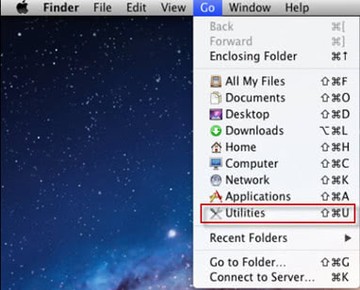
Locate the Activity Monitor icon on the screen and double-click on it
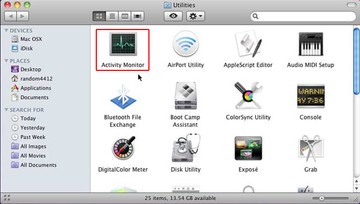
Under Activity Monitor, find a process named Desktop Goose, select it and click Quit Process
A dialog should pop up, asking if you are sure you would like to quit the MacRepair executable. Select the Force Quit option
Click the magnifying glass icon in the menu bar or press Command and Space keys simultaneously to open the Spotlight search tool. Then, type terminal.app in the search bar and press Enter
Once the Terminal window is in front of you, type the following string in it: killall “Desktop Goose”. Press Enter and exit the Terminal app
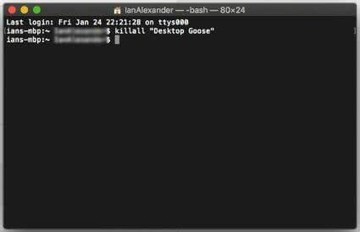
Expand the Go menu in Apple Finder and select Go to Folder.
Type or paste the following string in the folder search dialog: ~/Library/Containers.
Once the Containers directory opens up, find the following folder in it and move all of its contents to the Trash:
- net.namedfork.DesktopGoose
Click the Go button again, but this time select Applications on the list. Find the entry for MacRepair on the interface, right-click on it and select Move to Trash. If user password is required, go ahead and enter it
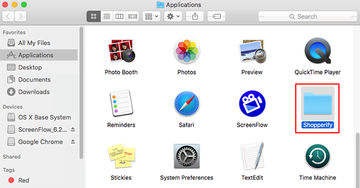
Now go to Apple Menu and pick the System Preferences option

Select Accounts and click the Login Items button. The system will come up with the list of the items that launch when the box is started up. Locate Desktop Goose or other potentially unwanted app there and click on the “-“ button
Get rid of redirect activity and unwanted ads in web browser on Mac
To begin with, settings for the web browser that got hit this virus should be restored to their default values. The overview of steps for this procedure is as follows:
- Reset Safari
- Open the browser and go to Safari menu. Select Preferences in the drop-down list
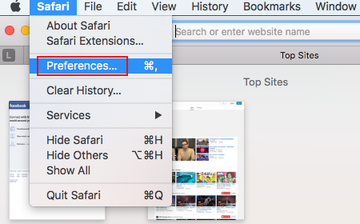
- Once the Preferences screen appears, hit the Privacy tab at the top. Find the option that says Remove All Website Data and click on it
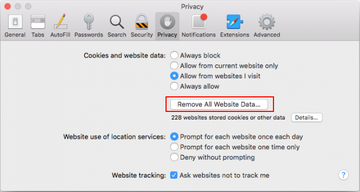
- The system will display a confirmation dialog that also includes a brief description of what the reset does. Specifically, you may be logged out of some services and encounter other changes of website behavior after the procedure. If you’re okay with that, go ahead and click the Remove Now button
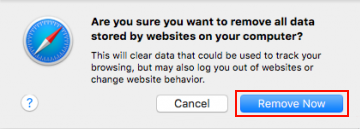
- In order to selectively clear data generated by certain websites only, not all of them, hit the Details button under the Privacy section of Safari Preferences

- This feature will list all websites that have stored potentially sensitive data, including cache and cookies. Select the one, or ones, that might be causing trouble and click the appropriate button at the bottom (Remove or Remove All). Click the Done button to exit.
- Open the browser and go to Safari menu. Select Preferences in the drop-down list
- Reset Google Chrome
- Open Chrome, click the More (⁝) icon in the top right-hand part of the window, and select Settings in the drop-down
- When on the Settings pane, selectAdvanced
- Scroll down to the Reset settings section. Under the Restore settings to their original defaults option, click the Reset settings button
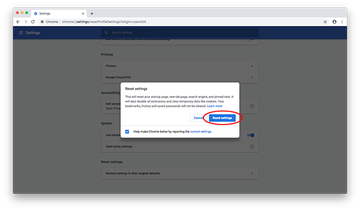
- Confirm the Chrome reset on a dialog that will pop up. When the procedure is completed, relaunch the browser and check it for malware activity.
- Reset Mozilla Firefox
- Open Firefox and select Help – Troubleshooting Information
- On the page that opened, click the Reset Firefox button
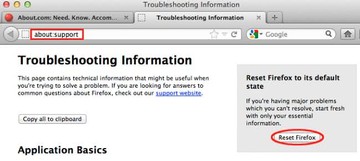
Use automatic tool to uninstall MacRepair unwanted app from your Mac
The Mac maintenance and security app called Combo Cleaner is a one-stop tool to detect and remove Desktop Goose virus. This technique has substantial benefits over manual cleanup, because the utility gets hourly virus definition updates and can accurately spot even the newest Mac infections.
Furthermore, the automatic solution will find the core files of the malware deep down the system structure, which might otherwise be a challenge to locate. Here’s a walkthrough to sort out the Desktop Goose issue using Combo Cleaner:
Download Combo Cleaner installer. When done, double-click the combocleaner.dmg file and follow the prompts to install the tool onto your Mac.
By downloading any applications recommended on this website you agree to our Terms and Conditions and Privacy Policy. The free scanner checks whether your Mac is infected. To get rid of malware, you need to purchase the Premium version of Combo Cleaner.
Open the app from your Launchpad and let it run an update of the malware signature database to make sure it can identify the latest threats.
Click the Start Combo Scan button to check your Mac for malicious activity as well as performance issues.
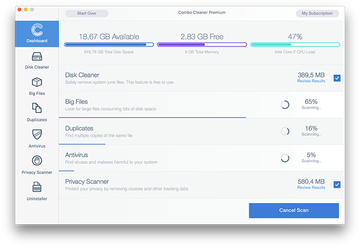
Examine the scan results. If the report says “No Threats”, then you are on the right track with the manual cleaning and can safely proceed to tidy up the web browser that may continue to act up due to the after-effects of the malware attack (see instructions above).
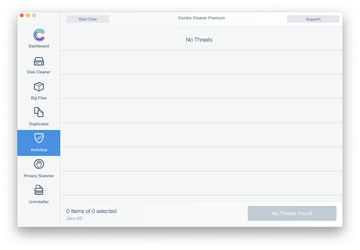
In case Combo Cleaner has detected malicious code, click the Remove Selected Items button and have the utility remove Desktop Goose threat along with any other viruses, PUPs (potentially unwanted programs), or junk files that don’t belong on your Mac.
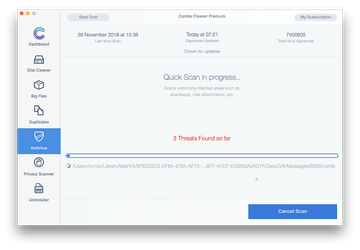
Once you have made doubly sure that the malicious app is uninstalled, the browser-level troubleshooting might still be on your to-do list. If your preferred browser is affected, resort to the previous section of this tutorial to revert to hassle-free web surfing.
